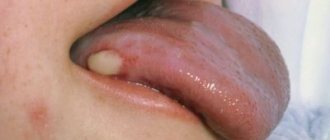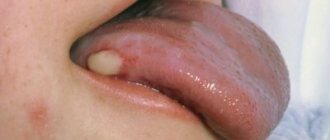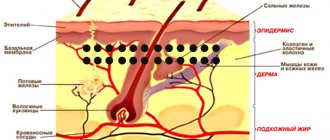Psoriasis of the feet and palms: signs
Psoriasis on the foot looks like a red thickening of the skin covered with blisters containing a yellowish fluid. This type is a type of pustular psoriasis and is rare.
There is also psoriasis of the feet of the vulgar type, in which the skin is thickened and red, and there are dry scales on top:
With psoriasis of the foot, the patient can move and work calmly, although it can be difficult to cope with the disease.
Forms of psoriasis of the legs
The disease is classified according to the type of damage to the body and the location of the affected area. For example, this disease can affect the feet, ankles, calves, toes and the area between them.
- Plaque (ordinary) psoriasis . This type is characterized by the formation of gray or silvery psoriatic plaques, which combine over time to form massive foci of inflammation. This subtype most often affects the legs, knees, and feet.
- Plantar pustulosis . The pathology is characterized by the formation of abscesses that grow and spread. The main aggravating factor is systematic mechanical damage to purulent formations when walking.
- Pustular generalized psoriasis . This type of disease is its most severe form, which is also called Zumbusch disease or exudative psoriasis. Characteristic features of this subtype of the disease are blistering formations that are filled with red liquid. They open, which increases the possibility of infection and suppuration. This disease is most often localized in the lower part of the legs, for example, on the feet, legs and knees.
- Acrodermatitis . This type of psoriasis most often causes separation of the nail plate.
- Guttate psoriasis . The cause of this type of disease is most often a streptococcal infection. This subtype is characterized by a rash consisting of small dots in the form of drops.
- Psoriatic arthropathy. A specific type of psoriasis, in which the course of the disease occurs inside the body, affecting the connective tissues, hip and knee joints. The main symptom of this subtype is swelling of the fingers of the lower extremities. With this disease, the likelihood of disability due to immobilization of the patient is extremely high.
- Psoriasis of the flexor areas of the hips and knees.
According to clinical manifestations, psoriasis is divided into:
- Erythrodermatic;
- Arthropathic;
- Vulgar (Ordinary);
- Pustular;
- Exudative.
Diagnosis of foot psoriasis
The disease is often confused with others similar to it:
- fungal infection of the feet;
- Andrews pustular bacterid;
- eczema.
To make sure of the diagnosis, get examined by a doctor . This is especially necessary if the manifestations of the disease are similar to other diseases and it is difficult to determine from a photo.
In addition, the doctor will check for the presence of concomitant diseases: metabolic disorders, endocrine disorders.
The dangers of self-medication for psoriasis of the legs
Often, patients feel that since drugs for the treatment of psoriasis are not prescription drugs, then contacting a specialist for qualified help can be neglected. However, most often, attempts to self-medicate this disease can result in irreversible consequences if the therapy was chosen at random. Before using any product, you should always consult with an experienced dermatologist, who can not only choose the right type of therapy, but also check the dosage.
Complications of improper treatment of leg psoriasis:
- withdrawal and addiction syndrome;
- skin burns from topical agents and herbal medicine;
- hypercalcemia from topical ointments and creams;
- allergic and inflammatory reactions of the body;
- worsening of the course of the disease and increased frequency of its relapses;
- skin atrophy;
- discoloration of healthy skin that surrounds damaged areas brown;
- disorders of the endocrine and cardiovascular systems when using hormonal drugs.
If you notice characteristic symptoms of the disease, you should immediately make an appointment with a dermatologist, who, after a thorough examination, will create the most effective treatment plan for you. There are situations when a specialist of the required profile is not in your clinic, then you need to seek help from a general practitioner, who will make a primary diagnosis and redirect you to a highly specialized professional.
If psoriasis of the legs affects the joints, then you should consult a rheumatologist.
Psoriasis of the foot: photo
See the photo of what psoriasis looks like on the feet:
Forecast
The disease often returns and relapses occur. In order not to provoke their occurrence, you need to adhere to a healthy lifestyle and eat right. It is necessary to enrich your diet with fresh vegetables and fruits.
Do not drink alcoholic beverages. Avoid spicy foods and excess carbohydrates. Wear clothes made from natural fabrics and comfortable shoes. Observe hygiene rules. Treat chronic diseases
Treatment of foot psoriasis
Treatment of psoriasis should be comprehensive:
- First of all, you need to relieve irritation, remove bubbles and dry scales. To do this, use non-hormonal proven means: salicylic ointment, tar against psoriasis (it can be mixed with salicylic ointment), grease ointments. Reviews about the treatment of palmoplantar psoriasis with ointments:
Review of the treatment of palmoplantar psoriasis with ointments
- For psoriasis of the feet and palms, the result is obtained by combining Daivonex or Daivobet with UV-B Ultraviolet. However, use Daivobet ointment carefully and only under the supervision of a doctor: the product contains a hormone.
Review of the treatment of palmoplantar psoriasis with ultraviolet light from user gastrit
Review of the treatment of palmoplantar psoriasis with ultraviolet light from user help
- Stick to a general daily routine and diet: exercise, eliminate alcohol and unhealthy foods, get enough sleep. Read in detail about nutrition for psoriasis and the Pegano regime in the publication: “Nutrition for psoriasis.”
- Avoid strong stressful situations and provocateurs of psoriasis: alcohol, poor environmental conditions, infections (especially streptococcal ones).
- Watch your thoughts, control your emotions. With psoriasis, it is important to set yourself up for recovery, think optimistically and positively.
How is plantar psoriasis treated in the clinic?
Therapy can only be external or systemic. The course of treatment depends on the stage of the disease at which the patient consulted a dermatologist, the pattern of its course, the general condition of the patient’s body and concomitant pathologies. It is also important how often he suffers from manifestations of psoriasis, at what time intervals the pathology bothers the person.
In addition, when choosing a treatment method, the following are taken into account:
- type of disease;
- size and concentration of lesions;
- degree of severity;
- patient's age;
- occupation.
Regardless of the chosen method, at the beginning of therapy, thermal, mechanical and chemical irritants are eliminated.
conclusions
Psoriasis on the feet looks like a red thickening of the skin covered with scales or blisters containing fluid.
The disease is easily confused with other skin diseases:
- fungus;
- eczema;
- Andrews bacteride.
Therefore, to clarify the diagnosis, undergo an examination.
Ointments based on grease, salicylic ointment for psoriasis, and ointments with tar are effective in treatment. Also use ultraviolet 311 nm if there are no bubbles with liquid.
Stages of psoriasis of the legs.
- Stage 1 or exacerbation . It is considered a progressive stage of the disease due to the characteristic increase in the number and size of damaged skin areas. There is active peeling and increased itching of the affected skin.
- Stage 2 or stationary . This stage is characterized by a lack of progress in the development of the disease, but it does not go away completely. There is active exfoliation of damaged skin and itching.
- Stage 3 or regression (remission). This stage is characterized by the complete disappearance of all visible signs of the disease. Sometimes pigmentation of the epidermis appears in the affected areas.
With each new exacerbation, the patient often has to go through all three stages again. The disease can be in remission from a couple of months to several years.
The best remedies for Psoriasis
Add to cart
Antipsoriasis cream 990 rub.
Add to cart
Magnipsor ointment RUB 1,490
Add to cart
Ultraviolet lamp Dermalight ® RUB 14,900.










